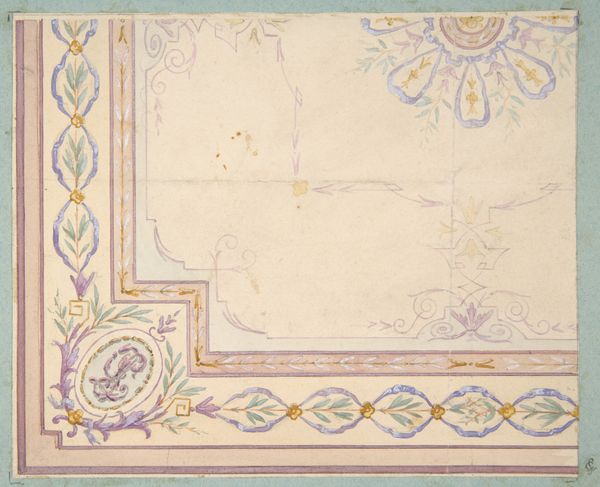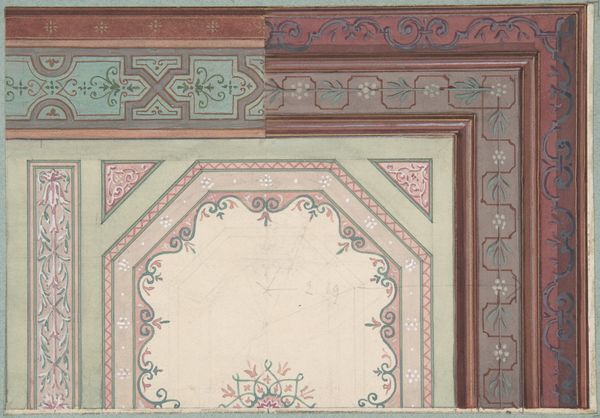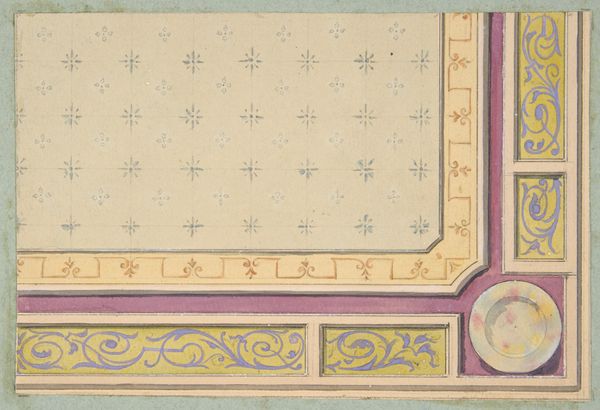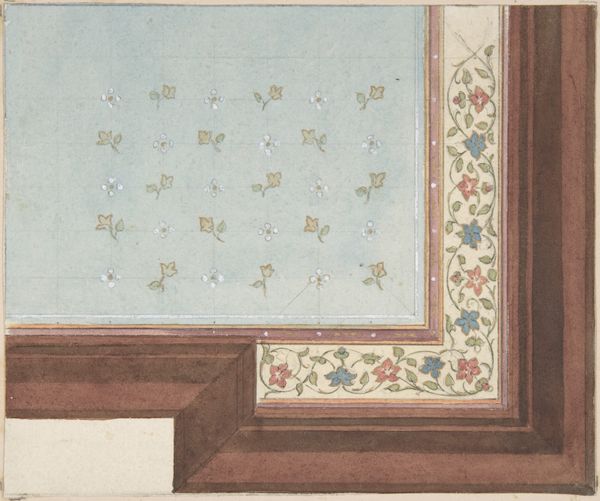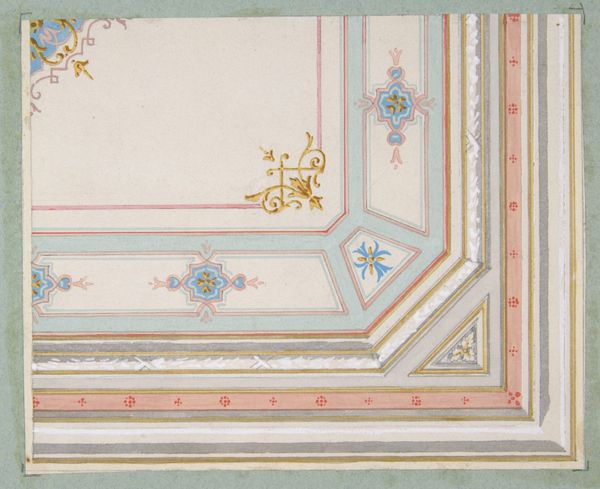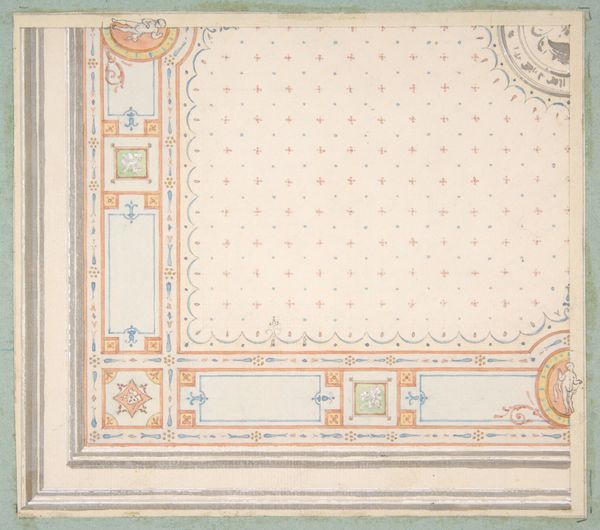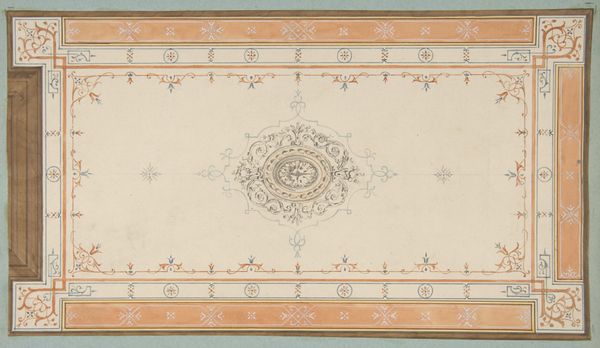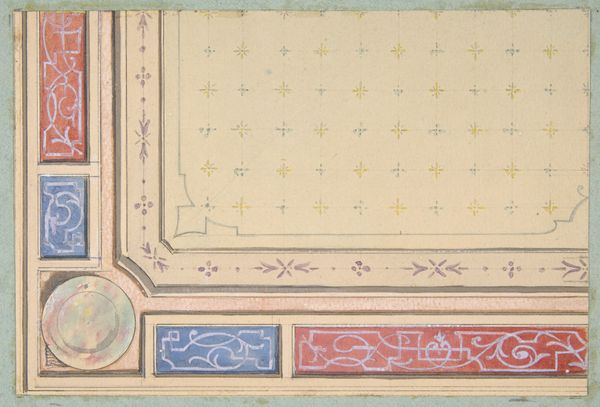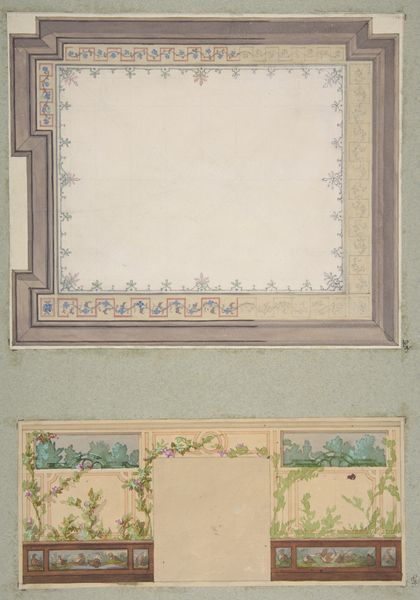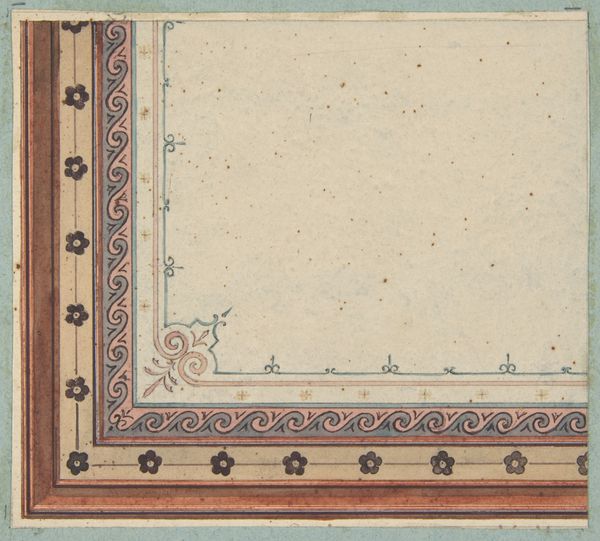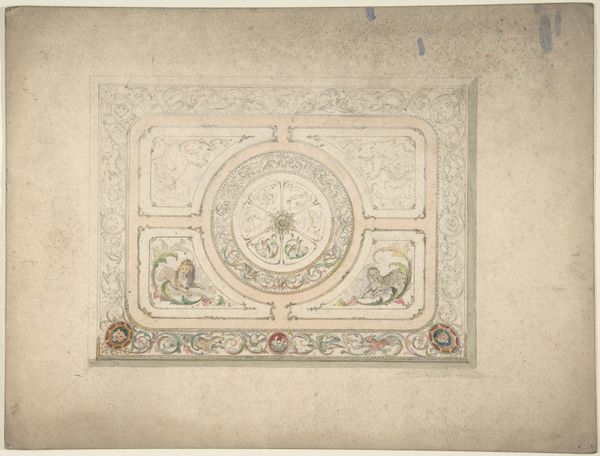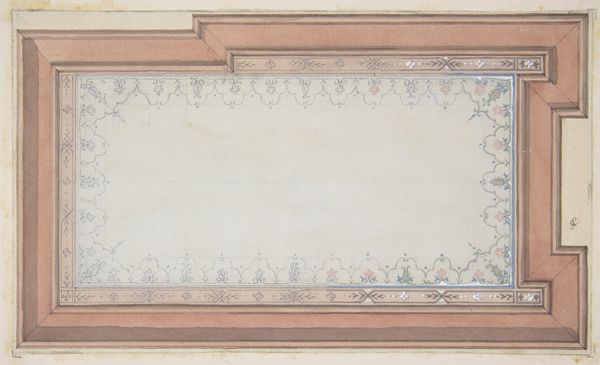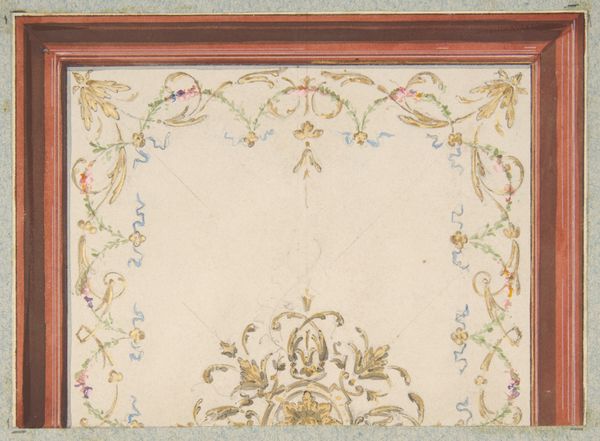
Partial design for the painted decoration of a ceiling 1840 - 1897
0:00
0:00
Copyright: Public Domain
Curator: This is a partial design for painted ceiling decoration by Jules-Edmond-Charles Lachaise, likely created between 1840 and 1897. It’s currently housed here at the Metropolitan Museum of Art. It’s rendered in watercolor. What are your first impressions? Editor: Immediately, I notice the sense of planned elegance, but there's also a handcrafted, almost folksy feel. The repeated motifs and muted colors lend it a peaceful, calming aura. Curator: Yes, absolutely. The Arts and Crafts movement influence is quite visible here; Lachaise’s rendering places emphasis on the handmade object. The regularity in pattern also speaks volumes to mass production techniques employed by printmakers of the period. Note how color enhances and enlivens, yet retains this quality as an artistic print rather than a mass-produced product. Editor: I'm intrigued by the swirled designs, the floral touches, and even the little crosses studding some of the borders. It reads to me as both reverent and celebratory, maybe alluding to a specific space, even hinting at some architectural detail. The top-right corner is like a fragment of memory. Curator: Exactly! You can see the artist applying various tones and subtle textures, even through printed applications, working the materiality. Consider the repetitive design work from both a labor and class perspective in terms of artistic expression. Editor: Right, and it raises questions about the client for this design, doesn't it? This feels destined for a space meant to inspire a quiet contemplation or provide solace. These motifs—scrolls, flowers, crosses—they're recurring emblems of something beyond just the aesthetic. It has hints of ecclesiastical design, but also perhaps references domestic peace and family. Curator: Thinking about its intended function, and who might have been able to afford this piece of applied decorative art. The means of its production and application are intrinsic to appreciating its value as well. Editor: It seems to blend aspiration and devotion—an attempt to imbue everyday life with deeper meaning through familiar, repeated symbolic forms. Almost like a spell against the chaos of the outside world, casting a decorative charm over the space. Curator: Absolutely. Thinking about labor practices during the Arts and Crafts movement opens another path into a work like this. The attention and artistry really are striking, particularly considering its end purpose. Editor: For me, looking at it now, I see it as not merely a design for decoration, but an attempt to define space through a symbolic visual language.
Comments
No comments
Be the first to comment and join the conversation on the ultimate creative platform.

